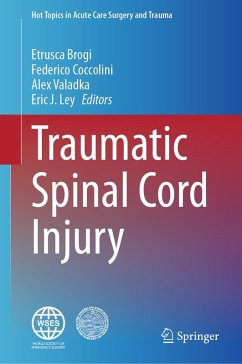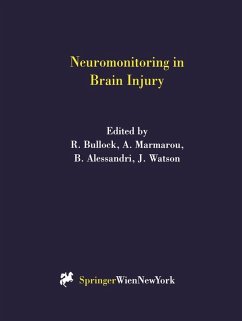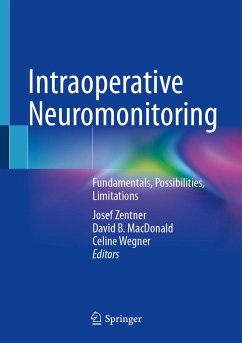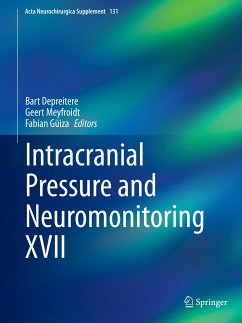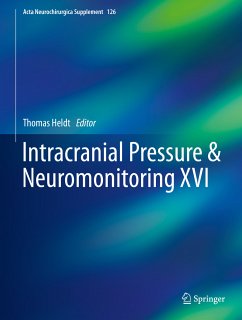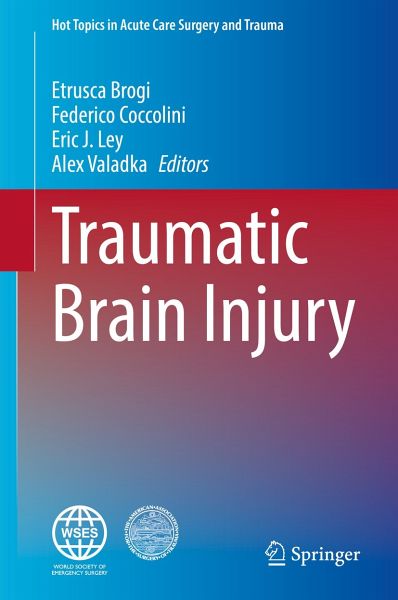
Traumatic Brain Injury (eBook, PDF)
Versandkostenfrei!
Sofort per Download lieferbar
80,95 €
inkl. MwSt.
Weitere Ausgaben:

PAYBACK Punkte
40 °P sammeln!
In spite of great improvements in prehospital, critical care, and surgical management, traumatic brain injury is still a leading cause of death and disability resulting in great socioeconomic burden. This book provides a comprehensive and practical perspective of the management of traumatic brain injury, from prehospital setting to discharge.Even more, the book highlights the importance of pathways (Trauma Center and Neurocritical Care Unit) and the central role of the specialized neurocritical care team and neurological critical care units in the practice of neurocritical care. Encouraging a ...
In spite of great improvements in prehospital, critical care, and surgical management, traumatic brain injury is still a leading cause of death and disability resulting in great socioeconomic burden. This book provides a comprehensive and practical perspective of the management of traumatic brain injury, from prehospital setting to discharge.
Even more, the book highlights the importance of pathways (Trauma Center and Neurocritical Care Unit) and the central role of the specialized neurocritical care team and neurological critical care units in the practice of neurocritical care. Encouraging a practical, protocol-driven, multidisciplinary approach for both adult and pediatric patients, the authors provide a methodological description of the diagnostic and therapeutic management of patients with traumatic brain injury throughout the patient journey. Neuromonitoring assumes predominant importance, with an increasing role of noninvasive monitoring (near-infrared spectroscopy, Pupillometry, transcranial color Doppler-TCD, transcranial color duplex-TCCD, and optic nerve ultrasound) and neurophysiology (electroencephalography and evoked potentials) for early recognition of complications and rapid assessment of the effectiveness of medical treatment. However, the increasing amount of data increases the complexity of interpreting the collected information. The basic principles of multimodal monitoring and the computer-assisted method are presented to provide an overview of the future direction regarding the integration and interpretation of different data obtained from various techniques.
Paying particular attention to prognosis and treatment-limiting decisions, the authors reviewed the critical role of neurorehabilitation and the clinical and bioethical perspective on brain death, organ donation, and communication with the family.
Even more, the book highlights the importance of pathways (Trauma Center and Neurocritical Care Unit) and the central role of the specialized neurocritical care team and neurological critical care units in the practice of neurocritical care. Encouraging a practical, protocol-driven, multidisciplinary approach for both adult and pediatric patients, the authors provide a methodological description of the diagnostic and therapeutic management of patients with traumatic brain injury throughout the patient journey. Neuromonitoring assumes predominant importance, with an increasing role of noninvasive monitoring (near-infrared spectroscopy, Pupillometry, transcranial color Doppler-TCD, transcranial color duplex-TCCD, and optic nerve ultrasound) and neurophysiology (electroencephalography and evoked potentials) for early recognition of complications and rapid assessment of the effectiveness of medical treatment. However, the increasing amount of data increases the complexity of interpreting the collected information. The basic principles of multimodal monitoring and the computer-assisted method are presented to provide an overview of the future direction regarding the integration and interpretation of different data obtained from various techniques.
Paying particular attention to prognosis and treatment-limiting decisions, the authors reviewed the critical role of neurorehabilitation and the clinical and bioethical perspective on brain death, organ donation, and communication with the family.
Dieser Download kann aus rechtlichen Gründen nur mit Rechnungsadresse in A, B, BG, CY, CZ, D, DK, EW, E, FIN, F, GR, HR, H, IRL, I, LT, L, LR, M, NL, PL, P, R, S, SLO, SK ausgeliefert werden.



